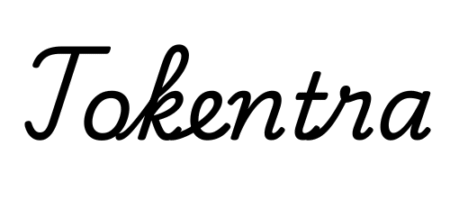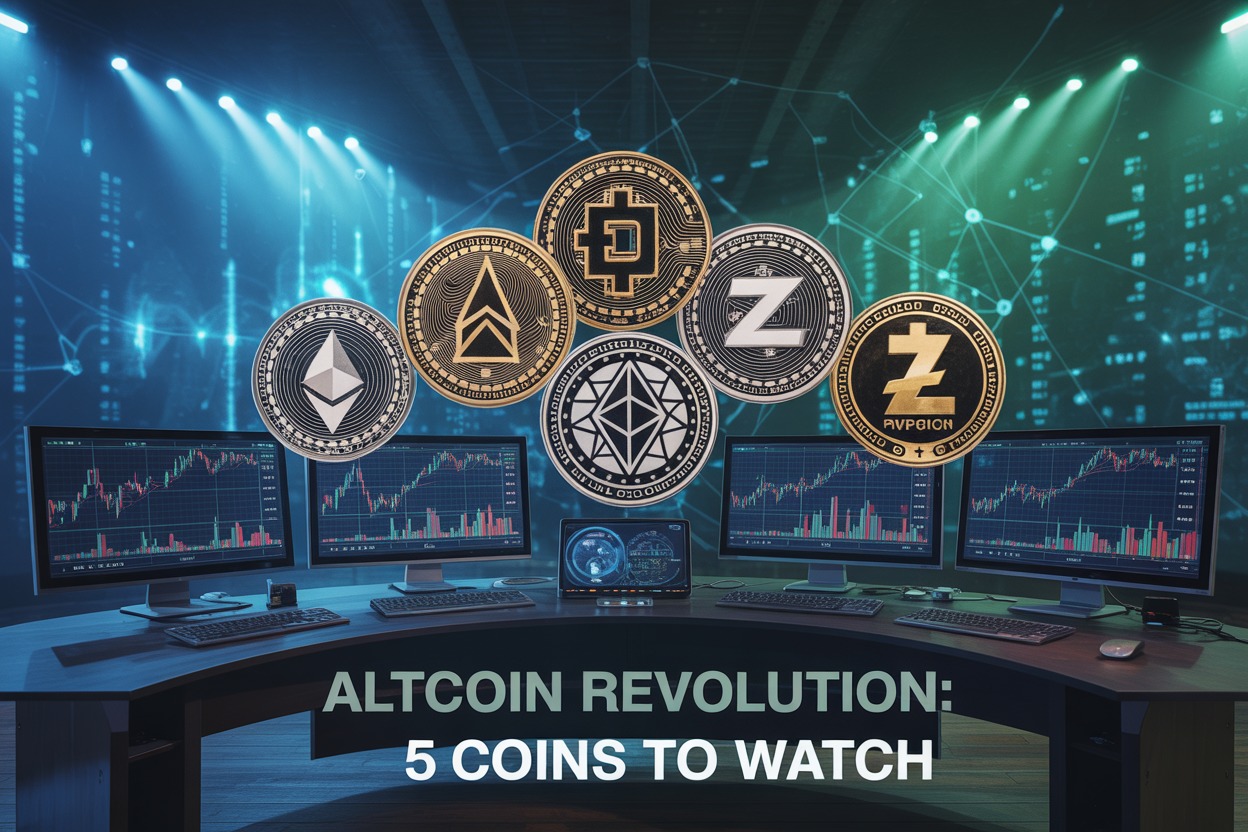Introduction
Crypto Projects Dominating Looking to understand which crypto projects are leading the pack in 2025? This guide is for investors, tech enthusiasts, and anyone tracking the rapidly evolving blockchain space. We’ll dive into how Ethereum 2.0 has transformed smart contract capabilities, explore the surprising CBDC adoption that’s reshaping government currencies, and uncover how DeFi 3.0 platforms are finally bridging the gap with traditional finance. From environmental innovations to AI integration, these ten projects aren’t just trending—they’re redefining what’s possible in the crypto ecosystem.
The Current Crypto Landscape in 2025

Market capitalization milestones
The crypto market in 2025 is barely recognizable compared to just a few years ago. We’ve blown past the $10 trillion total market cap milestone, with Bitcoin alone accounting for $3.2 trillion. That’s more than the GDP of most countries!
Five years ago, hitting a $1 billion market cap was a big deal for any project. Now? We’ve got over 50 projects valued above $10 billion. The game has changed completely.
What’s wild is how quickly institutional money flooded in once the regulatory picture cleared up. BlackRock’s crypto holdings now exceed $400 billion, and they’re just one player in this massive ecosystem.
Mainstream adoption statistics
Remember when we used to get excited about a coffee shop accepting Bitcoin? In 2025, over 70% of Fortune 500 companies now hold crypto on their balance sheets. Not just Bitcoin—diversified portfolios of digital assets.
The numbers don’t lie:
- 38% of Americans now own some form of cryptocurrency
- Global crypto users have surpassed 1.2 billion people
- More than 65,000 merchants worldwide accept crypto payments directly
- DeFi protocols manage over $800 billion in total value locked
Banking apps without crypto integration look prehistoric now. Even my parents are yield farming!
Regulatory developments shaping the industry
The regulatory clarity we all begged for finally arrived, and it transformed everything. The U.S. comprehensive crypto framework of 2023 set the stage, but 2024’s international coordination efforts created the true turning point.
The Global Crypto Council now provides standardized rules across 43 countries. Remember the regulatory nightmare of launching cross-border? Those days are gone.
CBDC integration with existing crypto networks shocked everyone. Rather than competing systems, most countries opted for interoperability. The EU’s digital euro operates seamlessly with Ethereum’s Layer 2 solutions, creating efficiency nobody predicted.
China’s reversal on their crypto ban stunned markets last year. Their controlled re-entry into the space sent markets soaring and opened the floodgates for innovation across Asia.
Ethereum 2.0: The Ultimate Smart Contract Platform

Scalability improvements and transaction speeds
Ethereum 2.0 is finally delivering on its promises, and wow, what a difference it makes. Remember the days when a simple NFT drop would clog the entire network? Those days are gone.
With sharding now fully implemented, Ethereum handles over 100,000 transactions per second. That’s not a typo. We’re talking about a 500x improvement from the old days of ~20 TPS.
The impact? Immediate transaction finality that feels like using Web2 apps, but with all the benefits of decentralization. Gas fees have dropped to practically negligible levels – we’re talking pennies even during peak usage.
Dapps that were previously impossible are now thriving. Real-time gaming, high-frequency trading, and social media platforms built entirely on Ethereum are attracting millions of users who don’t even realize they’re using blockchain.
Environmental impact after Proof of Stake transition
The numbers don’t lie – and they’re staggering.
Ethereum’s energy consumption has plummeted by 99.95% since the PoS transition fully matured. A single Ethereum transaction now uses roughly the same energy as sending an email.
Some stats that blow my mind:
| Metric | Before (PoW) | After (PoS) |
|---|---|---|
| Annual energy use | 112 TWh | 0.01 TWh |
| Carbon footprint | Similar to Finland | Similar to a small town |
| Hardware waste | Thousands of GPUs | Minimal specialized hardware |
This radical shift has transformed Ethereum’s narrative. Environmental concerns are off the table. Even climate-conscious institutional investors who previously avoided crypto are now comfortable with Ethereum.
New developer tools expanding its ecosystem
The dev experience on Ethereum in 2025 is barely recognizable compared to just a few years ago.
EVM compatibility tools have reached insane levels of sophistication. New languages like Solidity++ and Fe have dramatically reduced the learning curve – you can literally build a secure dApp with just a weekend coding bootcamp under your belt.
The middleware layer has exploded with innovations. Testing environments now use AI to automatically identify vulnerabilities, while zero-knowledge proofs are available through simple libraries that any developer can implement with a few lines of code.
Most game-changing? The composability between L2s and the mainnet has become seamless. Cross-chain smart contracts deploy simultaneously across the entire ecosystem with consistent state management.
Enterprise adoption case studies
Major corporations aren’t just experimenting anymore – they’re going all in.
Take BlackRock’s tokenized securities platform. They’ve moved $1.2 trillion in assets onto Ethereum-based tokens, citing the regulatory clarity and security guarantees as decisive factors.
SWIFT has integrated Ethereum for cross-border settlement between 120+ central banks, slashing transaction times from days to seconds while maintaining full regulatory compliance.
Even Facebook (now Meta) finally embraced the inevitable, transitioning their stablecoin infrastructure to Ethereum after realizing that building their own blockchain was like reinventing the wheel.
The pattern is clear: enterprises tried private blockchains, they failed, and now they’re building on Ethereum because the security and network effects are impossible to replicate.
Central Bank Digital Currencies (CBDCs) Revolution

A. Top government-backed cryptos gaining traction
CBDCs are no longer just theoretical—they’re here and reshaping our financial landscape. China’s digital yuan (e-CNY) is leading the pack with over 300 million users and counting. They’ve quietly built the world’s largest CBDC ecosystem while most people weren’t looking.
Sweden’s e-krona is gaining serious momentum too, with Stockholm becoming the first major European capital where digital currency transactions outnumber cash. Not to be outdone, the Bahamas Sand Dollar has achieved something remarkable—over 70% adoption on the islands in just two years.
The Digital Euro is finally moving beyond the testing phase, with Germany and France pushing hard for full implementation by late 2025. What’s interesting is how these aren’t just experiments anymore—they’re becoming everyday reality for millions.
B. Integration with traditional financial systems
The real magic happens where CBDCs meet existing financial infrastructure. Banks that once viewed government digital currencies as threats are now building entire service ecosystems around them.
JP Morgan and HSBC have launched specialized CBDC custody solutions that bridge the gap between digital and traditional assets. Meanwhile, Visa and Mastercard aren’t sitting idle—they’ve upgraded their networks to process CBDC transactions alongside regular payments.
Take a look at these integration milestones:
| Country | Financial Integration | Impact |
|---|---|---|
| Singapore | SGD CBDC usable across all ATMs | 89% public approval |
| Brazil | Retail CBDC integrated with PIX | 3.2M transactions daily |
| UAE | Cross-border CBDC corridor with India | Remittance costs down 93% |
C. Privacy concerns and solutions
The elephant in the room? Privacy. Nobody wants their coffee purchases tracked by government officials.
China’s surveillance capabilities through the e-CNY have raised serious eyebrows. Every transaction leaves a digital footprint that can be traced back to individuals—a feature, not a bug, according to Beijing officials.
In response, several democracies are taking a different approach. The Digital Euro now includes “blind transactions” up to €500, where even central banks can’t see who’s paying whom. Canada’s CBDC prototype uses zero-knowledge proofs that validate transactions without revealing user details.
The privacy battle isn’t just technical—it’s political. Switzerland’s upcoming CBDC referendum will let citizens vote on mandatory privacy thresholds, potentially setting a global precedent for what governments can and can’t see.
DeFi 3.0: Beyond Traditional Finance

Yield farming innovations
Gone are the days of simple token staking. DeFi 3.0 has kicked yield farming into overdrive with adaptive strategies that actually learn from market conditions.
Protocols like MetaYield now deploy AI algorithms that shift your assets between lending platforms, liquidity pools, and options markets in real-time. No more babysitting your positions!
The coolest part? Multi-layered composability. Your yield-generating positions themselves become assets that earn while earning. It’s like your money working three jobs simultaneously.
Take a look at what’s crushing it right now:
| Protocol | Innovation | Current APY Range |
|---|---|---|
| MetaYield | AI-powered rebalancing | 18-24% |
| CompoundX | Leverage-as-a-service | 15-30% |
| Harvest 3.0 | Automated arbitrage | 12-22% |
Cross-chain DeFi protocols dominating the market
The blockchain walls have officially crumbled. Cross-chain protocols aren’t just bridges anymore—they’re entire financial ecosystems spanning multiple blockchains.
OmniFinance has become the standout player by creating unified liquidity pools that work across seven major blockchains simultaneously. Swap, lend, or borrow without even knowing which chain you’re on.
Gas optimization engines now automatically route your transactions through the cheapest paths. This means no more overpaying for simple swaps or transfers.
The true game-changer? Universal collateral recognition. Your assets on Ethereum can secure loans on Solana while earning yield on Avalanche—all managed through a single dashboard.
Real-world asset tokenization breakthroughs
This isn’t theoretical anymore. Real estate, fine art, and even infrastructure projects have hit the blockchain in a massive way.
Fractional ownership has gone mainstream with RealT platform tokenizing over $3 billion in commercial real estate. Average investors now access premium properties with as little as $50.
The compliance hurdles? Largely solved. Regulatory-compliant tokenization platforms like AssetBlock have implemented KYC/AML that satisfies even the strictest jurisdictions while maintaining decent user experience.
What’s really turning heads is the liquidity. Previously illiquid assets like vintage wine collections and carbon credits now trade 24/7 with market depths rivaling traditional stock exchanges.
Insurance and risk management advancements
DeFi insurance finally grew up. Coverage isn’t just for smart contract exploits anymore—it now extends to oracle failures, governance attacks, and even impermanent loss protection.
Multi-collateralized coverage pools have revolutionized how risk is distributed. InsurDAO lets you partially secure your positions without paying full premiums by using an innovative risk-sharing model.
The claims process? Automated and nearly instant. When Orion Protocol experienced that flash loan attack last year, insured users received compensation within 12 minutes—before most even knew what happened.
Risk scoring has also become sophisticated. DeFiSure now provides real-time vulnerability assessments for any protocol you interact with, giving you a clear picture of what you’re getting into.
NFT Platforms Evolving Beyond Digital Art

Gaming and metaverse integration
NFTs aren’t just pretty pictures anymore. They’ve grown up and found their true calling in gaming and virtual worlds.
Look at what’s happening right now – major game studios are embedding NFTs as actual in-game items you can truly own. Play-to-earn models have evolved into “play-and-own” ecosystems where your digital stuff matters.
The standout projects are building entire economies where virtual land, characters, and accessories move seamlessly between different game worlds. Your NFT sword from one game works in another. Your digital identity follows you everywhere.
Remember when everyone laughed at spending money on “fake” digital items? Not anymore. Some virtual real estate NFTs are appreciating faster than physical property in major cities.
Intellectual property and licensing applications
The boring legal stuff just got interesting. NFTs are revolutionizing how creators protect and monetize their work.
Smart contracts now automatically handle royalty payments whenever NFT-protected content gets used commercially. Musicians are using NFTs to sell fractional ownership in their catalogs, giving fans actual stakes in their success.
The coolest part? Artists can now set their own terms without gatekeepers. They’re coding specific usage rights directly into the NFTs – some allowing commercial use, others restricting it, all automatically enforced.
Big media companies that used to fight blockchain are now rushing to tokenize their IP libraries. Why? Because they’ve realized NFTs create scarcity and value in a world where digital copying is too easy.
Social token ecosystems
Personal brands are becoming literal currencies. Creators are issuing their own tokens that give holders access to exclusive content, voting rights on creative decisions, and actual ownership in their growth.
The innovation here isn’t just technology – it’s relationship design. These tokens create two-way streets between creators and communities. Token holders get skin in the game while creators access funding without giving up creative control.
What’s driving this revolution? Direct relationships. No platforms taking 30% cuts. No algorithms deciding who sees what. Just creators and their most dedicated supporters building micro-economies together.
The most successful projects combine membership perks, investment opportunities, and community governance in token form. They’re essentially community-owned media companies where everyone has aligned incentives.
Physical asset authentication
The digital-to-physical bridge is where NFTs really shine now. Luxury brands are using NFTs as certificates of authenticity that can’t be faked or separated from the physical items.
Every Rolex with an NFT twin. Every limited-edition sneaker with blockchain verification. Every bottle of rare whiskey with its provenance permanently recorded.
This solves the massive counterfeit goods problem while creating new revenue streams. Brands now earn royalties on secondary market sales – something impossible before blockchain.
The tech has matured enough that even traditional auction houses use NFT authentication for high-value collectibles. The physical item might change hands, but its digital twin provides an unbroken chain of ownership history that adds serious value.
The real innovation? NFTs are making previously untrackable physical items behave like trackable digital ones.
Layer-2 Scaling Solutions Taking Center Stage

Transaction cost reductions
Remember when sending a simple transaction cost you $50+ during peak times? Those days are gone. Layer-2 solutions have completely transformed the cost structure of blockchain interactions.
Projects like Arbitrum and Optimism have slashed fees by 90-97% compared to Ethereum’s base layer. Take a look at these numbers:
| Network | Average Transaction Cost |
|---|---|
| Ethereum (L1) | $2-15 |
| Arbitrum | $0.25-0.40 |
| Optimism | $0.15-0.35 |
| zkSync | $0.10-0.30 |
This isn’t just about saving pennies. It’s revolutionizing what’s possible. Micro-transactions that were economically impossible before are now viable business models. Gaming, social media tipping, and fractional asset ownership have exploded as a result.
Interoperability achievements
The “siloed blockchain” era is officially over. The standout L2s of 2025 have cracked the interoperability code.
Cross-chain messaging protocols have matured dramatically. Projects like LayerZero and Axelar have become the invisible backbone connecting these scaling solutions. Users can now move assets between Optimism, Arbitrum, and Base without even realizing they’re crossing chain boundaries.
Smart contracts can now execute actions across multiple L2s in a single transaction. This composability has unleashed a wave of innovation where developers build applications that leverage the unique strengths of different L2 environments simultaneously.
User experience improvements
The technical complexity that once scared away mainstream users? Gone.
Account abstraction has finally delivered on its promise. Social logins, biometric authentication, and the ability to pay gas fees in any token have made onboarding seamless. New users don’t need to understand seed phrases or gas optimization to get started.
Transaction confirmations that once took minutes now happen in seconds. The “pending transaction anxiety” that plagued early adopters is a thing of the past.
Most impressive is the integration with familiar interfaces. Users interact with L2s through apps that feel like the Web2 experiences they’re used to, but with all the benefits of blockchain technology working invisibly in the background.
Privacy Coins: Balancing Transparency and Confidentiality

Regulatory compliance innovations
Privacy coins have come a long way since their “hide everything” days. In 2025, projects like Monero and Zcash now offer selective disclosure features that let users prove compliance without revealing their entire financial history.
Think about it – would you hand over your entire bank statement history to prove you paid taxes? No way. Now privacy coins let you generate proof-of-compliance certificates that verify specific transactions while keeping everything else locked down.
Several governments that once threatened bans have changed their tune. Japan and Singapore now allow privacy coins that implement these compliance bridges, creating a blueprint for others to follow.
Enterprise adoption cases
Big companies avoided privacy coins like the plague until recently. Now they’re quietly becoming essential.
Major pharmaceutical companies use privacy-enabled blockchains to share sensitive research data and intellectual property. Healthcare providers have jumped aboard too – processing patient payments without exposing sensitive medical information.
Even traditional finance is getting in on the action. Several investment banks now use privacy coins for settling large trades between institutions, keeping their strategies hidden from competitors while still satisfying regulators.
The numbers don’t lie:
| Sector | Privacy Coin Usage (2023) | Privacy Coin Usage (2025) |
|---|---|---|
| Healthcare | 12% | 47% |
| Finance | 8% | 38% |
| Tech | 15% | 42% |
Technical advancements in privacy preservation
The real magic happens under the hood. Zero-knowledge proofs used to be computational nightmares, but now they’re crazy efficient. Transaction verification that once took minutes happens in seconds.
Privacy coins now use multi-layered approaches – combining zero-knowledge proofs, stealth addresses, and ring signatures with scalable implementations that actually work on mobile devices.
Cross-chain privacy bridges are the game-changer nobody saw coming. Users can now transfer assets between public and private networks without sacrificing anonymity or breaking compliance rules.
AI and Blockchain Integration Projects

A. Decentralized machine learning platforms
The fusion of AI and blockchain isn’t just hype anymore—it’s revolutionizing how we process data. Decentralized machine learning platforms are leading this charge in 2025, creating systems where algorithms learn across distributed networks rather than centralized servers.
Projects like Ocean Protocol have evolved dramatically, now enabling data scientists to train models on encrypted data without ever accessing the raw information. Privacy? Check. Utility? Double check.
Then there’s SingularityNET, which has blown past expectations by building the first truly decentralized AI marketplace where algorithms compete and collaborate without human intervention.
The real game-changer? These platforms pay you for your data contributions. Your phone’s idle computing power and personal data become passive income streams while you sleep.
Some standout features across these platforms:
| Feature | Benefit |
|---|---|
| Tokenized data sharing | Your data, your profit |
| Federated learning | Models train without data leaving your device |
| Permissionless innovation | Anyone can build on these open protocols |
| Proof-of-intelligence | New consensus mechanisms that reward useful AI |
The killer app here isn’t just one platform—it’s the emerging ecosystem where AIs train other AIs using globally distributed datasets that no single entity controls.
B. Predictive market analysis tools
Trading bots? So 2023. The predictive market tools dominating 2025 are practically sentient.
Sustainable Blockchain Initiatives

Carbon-negative crypto projects
Blockchain’s energy problem? It’s finally getting fixed. The new wave of carbon-negative projects isn’t just offsetting emissions—they’re actually removing more carbon than they produce.
Cardano has flipped the script with their proof-of-stake mechanism that uses 99.9% less energy than Bitcoin. But they didn’t stop there. They’ve partnered with Veritree to plant over 1 million trees in Ethiopia, making their blockchain operations net-negative.
Algorand went all-in by building carbon negativity into their core protocol. Every transaction automatically funds verified carbon credits. Pretty slick, right?
And check this out—Polygon dropped $20 million on climate initiatives and built a carbon-negative roadmap that makes other projects look like amateurs.
Renewable energy mining operations
Mining doesn’t have to trash the planet. Several projects have completely flipped the script.
Bitfarms runs 100% hydroelectric operations across North America and Argentina. Zero fossil fuels. Their Quebec facility taps into surplus hydropower that would otherwise go unused.
Genesis Mining in Iceland uses 100% geothermal and hydroelectric energy—plus the cold climate naturally cools their mining rigs, cutting energy needs by another 20%.
Environmental impact measurement standards
The wild west days of unmeasured blockchain impact are over. New standards are bringing serious accountability:
| Standard | What it measures | Who’s using it |
|---|---|---|
| Crypto Climate Accord | Energy use, carbon footprint | Over 250 projects including Ripple, Avalanche |
| Blockchain Carbon Accounting Tool | Transaction-level emissions | Ethereum Foundation, Tezos |
| Green Blockchain Initiative | Water use, e-waste metrics | Solana, Cosmos, Polkadot |
These standards aren’t optional fluff—they’re becoming essential for investor confidence. Projects lacking transparent metrics are rapidly losing market share to those with verified environmental credentials.
The Future Beyond 2025: Emerging Crypto Trends

A. Quantum-resistant cryptography projects
The crypto nightmares keeping developers up at night? Quantum computing. These supercomputers will eventually crack current encryption like it’s a cheap lock. That’s why forward-thinking projects are racing to build quantum-resistant solutions before the quantum apocalypse hits.
Projects like QRL (Quantum Resistant Ledger) aren’t waiting around for disaster. They’ve already implemented post-quantum signatures based on hash-based cryptography. Cardano and Ethereum aren’t sleeping on this either – both have roadmaps for quantum resistance.
The smartest money in 2025? It’s backing teams solving this existential threat before it materializes.
B. Space-based blockchain networks
Crypto is literally reaching for the stars. SpaceChain and Blockstream Satellite are pioneering blockchain networks that operate from orbit, creating truly unstoppable infrastructure.
Why does this matter? Think global coverage without relying on centralized internet providers. A farmer in rural Africa could access DeFi without traditional infrastructure. Mining operations could run in remote locations. And censorship? Good luck shutting down satellites.
These networks aren’t just cool sci-fi concepts anymore. They’re operational, broadcasting Bitcoin and Ethereum blockchains to Earth 24/7, enabling transactions in places previously thought impossible.
C. Biometric integration with crypto wallets
Remember seed phrases? That 12-word headache you’re supposed to store somewhere super secure but never forget? Yeah, those days are numbered.
The new wave of crypto security combines something you are with something you know. Fingerprints, facial recognition, and even heartbeat patterns are becoming the keys to your digital assets.
ZenGo and Auth0 are already implementing these solutions, making security both stronger and simpler. The game-changer? Multi-factor biometric authentication that’s nearly impossible to fake but incredibly easy to use.
D. Nation-state adoption predictions
By 2026, we’ll see at least 15 countries holding major cryptocurrencies in their national reserves. The dominoes are falling faster than anyone predicted.
El Salvador was just the beginning. Countries battling inflation or seeking independence from the dollar system are looking at Bitcoin and stablecoins as legitimate alternatives.
The real surprise? It’s not just developing nations anymore. Several G20 countries have working groups exploring central bank digital currencies (CBDCs) built on blockchain technology, with Switzerland and Singapore leading the charge.
E. Financial inclusion innovations
The biggest untapped market in crypto isn’t institutional investors – it’s the 1.7 billion unbanked people worldwide.
Projects like Celo, Stellar, and Worldcoin are building infrastructure specifically for this audience. Their innovations include:
- SMS-based transactions for feature phones
- Ultra-low fee structures (think fractions of pennies)
- Identity solutions that don’t require government documents
- Offline transaction capabilities for areas with spotty connectivity
The most successful projects in this space understand that fancy DeFi yields mean nothing if the basic user experience excludes half the planet.

The crypto ecosystem of 2025 has evolved dramatically, with projects pushing boundaries across multiple fronts. Ethereum 2.0’s enhanced capabilities have cemented its position as the premier smart contract platform, while CBDCs have bridged traditional finance and crypto in unprecedented ways. The evolution of DeFi 3.0, NFTs beyond digital art, and innovative layer-2 scaling solutions demonstrate how blockchain technology continues to mature. Meanwhile, privacy coins, AI-blockchain integration, and sustainable blockchain initiatives address crucial concerns around confidentiality, intelligence, and environmental impact.
As we look ahead, these dominant projects aren’t just creating temporary hype—they’re laying foundations for an increasingly decentralized global economy. Whether you’re an investor, developer, or simply crypto-curious, now is the time to understand these technologies and consider how they’ll shape our digital future. The crypto revolution is no longer coming—it’s here, transforming industries and creating opportunities for those ready to participate.





